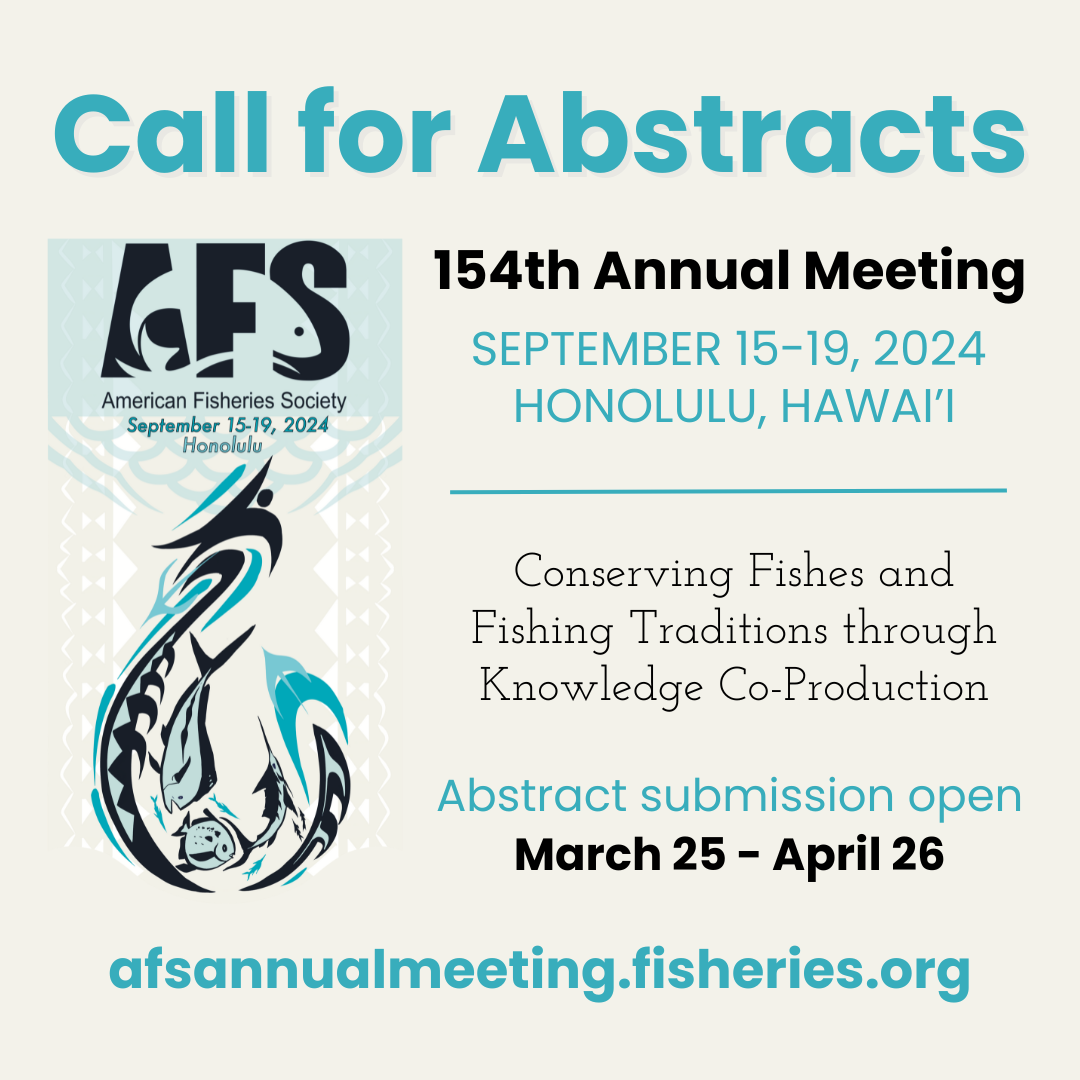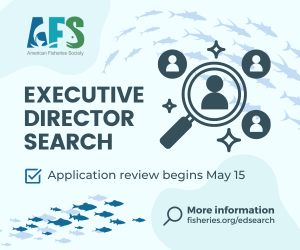Jim Burroughs, Oklahoma Department of Wildlife Conservation, 9097 North 34th Street West, Porter, OK 74454. E-mail: [email protected]
Shannon K. Brewer, U.S. Geological Survey, Oklahoma Cooperative Fish and Wildlife Research Unit, Oklahoma State University, Stillwater, OK
The collaborative approach to natural resource management has developed to include the needs, opinions, and perceptions of a variety of people representing science, along with those representing social or economic perspectives and often involving our political system. The natural sciences are represented by agency personnel who generally are focused on the best ecological outcomes for the resource (but see Michael 2017, this issue; Ruch 2017, this issue). Other involved parties include socioeconomic scientists and industrial, agricultural, and economic interests, each with their own unique science, perspectives, and agendas. Given the diverse set of stakeholders involved, it is not surprising that the political process is part of our decisions and influences outcomes that can sometimes be frustrating to natural resource scientists and managers. The dilemmas that accompany this tangled web are not new to the current generation of natural resource professionals. However, new professionals who have just completed academic degrees are often caught off guard when their best researched and strategized management plans meet sociopolitical disagreements that thwart their best efforts. In this article, we briefly summarize the complex relationship between agencies and sociopolitics, present the management of tailwater streams (i.e., stream segment downstream of a dam) as an example of managing under this complexity, and provide a few examples of how to provide science with a stronger voice and greater transparency in natural resource decisions.
The relationships between agencies and elected officials affect the balance between politics and science in making natural resource decisions. Top state and provincial agency officials sometimes report directly to the governor, premier, or an appointed commission. Agencies with budgets appropriated by legislatures and changes in administration add additional layers of complexity to the relationship. Politics and science are further linked via government committees composed of nonscientists providing oversight of scientific organizations. An example at the federal level is the U.S. Senate Subcommittee on Space, Science, and Competitiveness, currently chaired by Ted Cruz, which oversees climate research and funding at the National Oceanic and Atmospheric Administration. At the U.S. state level, political commissions may oversee natural resource agencies. In either example, human needs are part of the decision processes and, ideally, science is represented in the process without undue bias. However, in some cases, science may be unduly influenced under the guise of the review process (Ruch 2017, this issue). Alternatively, scientists may not effectively communicate scientific results in a way that is understandable, and thus useful, to making informed political decisions (Michael 2017, this issue).
Natural resources decisions lie along a continuum between science and sociopolitics. Simplified, agencies have five basic paths:
1. making a decision beneficial to the natural resource with little
or no political influence,
2. making a decision that benefits the resource but has possible
sociopolitical repercussions,
3. making a decision that does not benefit the resource because
of overwhelming sociopolitical influence,
4. making no decision at all or substantially delaying a decision
because of sociopolitical concern, or
5. making a decision that benefits both natural resources and
sociopolitical needs.
It is a boon for resources when the first or last paths are the obvious choices. The remaining three paths represent decisions where science is not the driver but may be used to educate decision makers and the general public. A national example related to several of these possible pathways is the enforcement of Clean Water Act standards in tailwater streams. Many tailwater streams have been listed on the 303d list of impaired waters (e.g., White and Norfolk rivers in Arkansas, Franks 2006; lower Illinois River in Oklahoma, Oklahoma DEQ 2014) due to dissolved oxygen levels that do not meet aquatic life-use support criteria. The insufficient levels are related to a combination of hydropower generation, stratification of the upstream reservoir, and lack of instream flows to support biological needs. The question that often arises with the degradation of tailwater resources is who is responsible for the damage? According to the U.S. Environmental Protection Agency, water quality standards apply to tailwater streams (Novak et al. 2015). However, the state agency responsible for water quality may not agree with the interpretation of the standard and, if it does, it may be unclear who is responsible for making flow release decisions (i.e., the federal agency that owns the dam or the power company that generates electricity). Agencies are faced with several possible decisions that may relate to several of the aforementioned pathways, including applying for downstream water permits, discontinuing trout stocking, or ignoring the water quality violations that may result in publicized fish kills. Gray areas such as these have existed for years, yet attempts to determine the responsible party are often avoided and the resource remains degraded. Enforcement responsibility is also a confounding factor. In our example, federal agencies frequently avoid getting involved in state matters concerning water quality and defer enforcement to the states. The states may claim no enforcement authority. This circle of no responsibility perpetuates the status quo. The process would benefit from involvement by scientists who can better educate special interest groups and agency personnel on the likely outcome of different decisions. Other interest groups and the general public can then voice their concerns to politicians.
We see the need for two important efforts in the decision process: increased focus by agency scientists in advocating science and its implications and a more transparent process of decision making that is agreeable to all stakeholders from the beginning (when the objective is initiated) and through each step. Agency scientists can play a more active role in educating their constituents so they realize the ecological implications of the decisions. More important, agencies would benefit from embracing processes that promote transparency in decision making (Ruch 2017, this issue).
Interactions between agency staff and interest groups or professional societies are two communication pathways that can be useful for strengthening the voice of science during decision making processes. Educating particular interest groups (e.g., trout fishers, bass fishers) is one way to ensure that citizens understand science related to specific resource dilemmas. Part of our duty as scientists is to provide scientific information to our constituents (see Hughes 2014). Scientific information can be used to describe ecological consequences and socioeconomic costs (Hughes 2013). Scientists can present the facts and then relate those facts to what would be best for a particular ecological situation, but the ultimate decision extends to a balance with what is viewed as best for society. Advocacy on particular issues by professional societies is often viewed as acceptable when the advocacy represents the group’s viewpoint on an issue (e.g., AFS 1996). The voice of professional societies creates anonymity for agency personnel. By working with others within such societies, the voice of science may be heard by politicians. Local AFS Chapters can construct position statements to be shared on websites and with politicians (e.g., Martin et al. 2017, this issue). For example, the Idaho AFS Chapter has developed several position statements including responses to management of irrigation projects (i.e., water quantity, 1994) and species listings (i.e., resolution on the role of dams related to salmon and recovery, 1999; Bernard 2007). Although such actions may lead to improvements in some situations, the management decisions are rarely transparent.
Professionals would benefit from the use of processes that allow a clear path to our decisions that include both scientific knowledge and sociopolitics. For example, structured decision making (or other equivalent processes) was designed to make the objectives obvious and the path forward clear. In fact, one of the benefits of structured decision making is to promote transparency related to legal mandates and public preferences, thereby attempting to integrate policy and science (USFWS 2008). These types of organized processes are ways to make decisions in the face of uncertainty. The resulting decisions may not have the desired ecological or political outcome for some, but the path taken to get there should be obvious and, thus, we are able to learn from and are held accountable for our decisions. Uncertainty is a part of every decision, and although there are certainly reasons to collect more data before decisions are made, throwing research dollars to meet the political and public outcry for “something to be done” can simply delay a difficult decision (i.e., path 4 above).
As natural resource professionals, we have to move forward with sound science while using processes that acknowledge sociopolitical preferences. At the same time, scientists can improve educating our constituents and being active in their professional societies to address natural resource issues requiring a stronger voice. Sound natural and socioeconomic science plays a vital role. Scientific information needs to be distributed to decision makers, the general public, media, and our professional societies. It is also important to convey to professionals that it is unrealistic to expect science alone to drive the decision-making process. We can educate professionals about the reality of these processes so that they can provide improved outreach and education. More important, we would benefit from equipping natural resource professionals with the skills to (1) collect meaningful data, (2) distribute those data in multiple formats that can be easily understood by different audiences (e.g., journals, popular magazines, social media), (3) involve their professional societies, and (4) present data and negotiate for the resources in meetings and public forums. We also can educate professionals more about the importance of collecting and understanding human dimensions (socioeconomic) data to help support natural resource efforts.
ACKNOWLEDGMENTS
We appreciate the critical reviews provided by three anonymous reviewers and Bob Hughes, Guest Editor. We also thank Garey Fox, Emily Tracy-Smith, Joseph Margraf, and Kevin Whalen for comments provided on an earlier draft.
REFERENCES
AFS (American Fisheries Society). 1996. Policy statement: advocacy guidelines. Available: https://fisheries.org/policy_advocacyguidelines. (January 2016).
Bernard, J. 2007. The history of the Idaho Chapter of the American Fisheries Society. Available: http://www.idahoafs.org/documents/IdahoChapterAFSHistory.pdf. (March 2016).
Franks, J. 2006. Overview of the Clean Water Act. Available: http://www.swpa.gov/PDFs/Hydro/2006Meeting/epa_clean_water_act.pdf. (August 2016).
Hughes, B. 2013. We are the AFS, we speak for the fish. Fisheries 38:527.
Hughes, B. 2014. Fisheries ethics, or what do you want to do with your scientific knowledge in addition to earning a living? Fisheries 39:195.
Martin, L. M., L. H. Roulson, and H. Sexauer. 2017. Engagement and challenges in advocacy: experiences from the Western United States. Fisheries 42:369–372.
Michael, J. H., Jr. 2017. Managing salmon for ecosystem needs in the pacific northwest: limiting science input in ecosystem management—silos r us. Fisheries 42:373–376.
Novak, R., J. G. Kennen, R. W. Abele, C. F. Baschon, D. M. Carlisle, L. Dlugolecki, J. E. Flotermersch, P. Ford, J. Fowler, R. Galer, L. P., Gordon, S. N. Hansen, B. Herbold, T. E. Johnson, J. M. Johnston, C. P. Konrad, B. Leamond, and P. W. Seelbach. 2015. Protecting aquatic life from effects of hydrologic alteration. U.S. Geological Survey Scientific Investigations Report 2015-5160 and U.S. Environmental Protection Agency Report 822-P-15-002. Available: https://www.epa.gov/wqc/final-epausgs-technical-report-protecting-aquatic-lifeeffects-hydrologic-alteration-documents. (June 2016).
Oklahoma DEQ (Department of Environmental Quality). 2014. Appendix C: 2014 Oklahoma 303(d) List of Impaired Waters. Available:
http://www.deq.state.ok.us/WQDNew/305b_303d/2014/2014_appendix_c_303d-final.pdf. (August 2016).
Ruch, J. 2017. Emerging law of scientific integrity—a bumpy birth. Fisheries. 42:353–356.
USFWS (U.S. Fish and Wildlife Service). 2008. Introduction to structured decision making. Available: http://www.fws.gov/science/doc/structured_decision_making_factsheet.pdf. (January 2016).
Members click below for the July 2017 Fisheries magazine’s complete issue. Non-members, join here.
This content is for members only. Please login.





